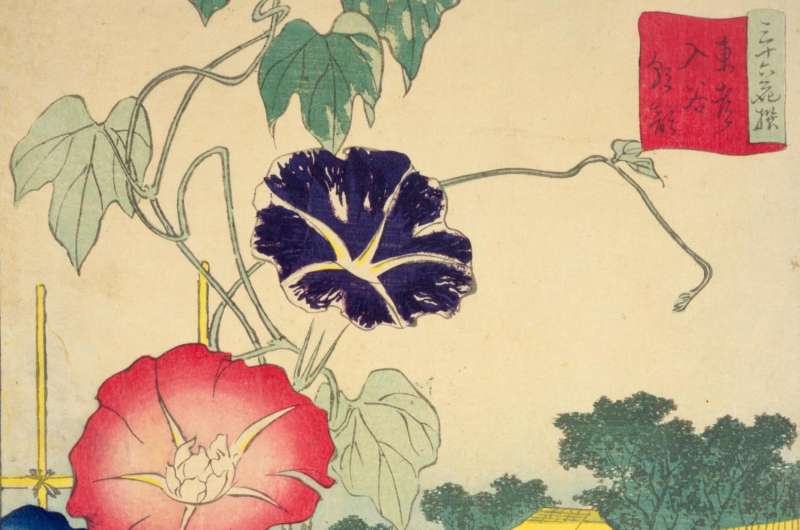Decoding the genome of the Japanese morning glory

Researchers in Japan have successfully decoded the entire Japanese morning glory genome. Japanese morning glories (Ipomoea nil) are traditional garden plants that are popular in Japan. You can see the flower in many Japanese gardens in the summer. Further, mutants are known to frequently appear in morning glories due to the actions of "jumping genes", called transposons. From the Edo period (about 200 years ago), morning glories with strange shaped flowers and leaves have been bred and appreciated, and this has developed into a unique gardening culture in Japan. Because of the popularity of these "mutant morning glories", a lot of natural mutants have been collected. In modern times, by analyzing these mutants in detail, researchers have found a number of genes that determine flower and leaf shapes as well as flower colors and patterns.
The research group has deciphered the entire genome of the Japanese morning glory standard line. One of the research leaders, Professor Yasubumi Sakakibara of Keio University, who was in charge of assembly and bioinformatics analysis of the genome in the present study said that "A high-quality nearly complete genome sequence was obtained, leading to identification of the coding sequences of the approximately forty three thousand morning glory genes, as well as the number and distribution of the transposons which produce the stunning variety of morning glory colors and shapes."
The research group used the entire genome sequence to characterize the mutants showing dwarfism with dark-green, thick and wrinkled leaves. They identified a gene for plant hormone biosynthesis that is disrupted by the transposons in the mutants.
Kyushu University Lecturer Eiji Nitasaka, stock manager of the National BioResourse Project (NBRP) Morning Glory, said "With the decoding of the genome the value of using Japanese morning glory as a model organism has increased dramatically. I hope Japanese morning glories and their mutants will be used by many researchers around the world." One of the leaders of this study, Assistant Professor Atsushi Hoshino of the National Institute for Basic Biology, said, "The genome sequence of the Japanese morning glory will not only aid in understanding of the morning glory itself, it will also be utilized in research of closely related crops such as sweet potatoes." The research has been published in Nature Communications.
-

The genome of this 'Japanese morning glory standard line' was sequenced. Credit: NIBB -

The variety of Japanese morning glory colors and shapes. Credit: Kyushu University
More information: Atsushi Hoshino et al, Genome sequence and analysis of the Japanese morning glory Ipomoea nil, Nature Communications (2016). DOI: 10.1038/ncomms13295
Journal information: Nature Communications
Provided by National Institutes of Natural Sciences


















